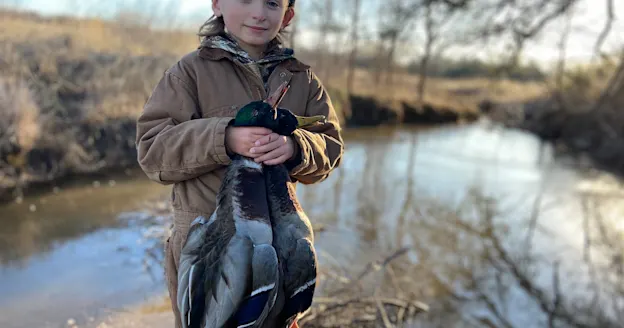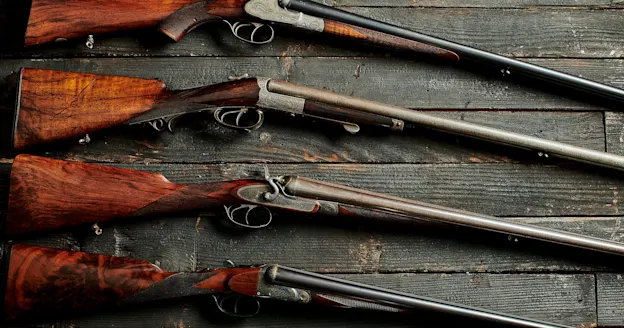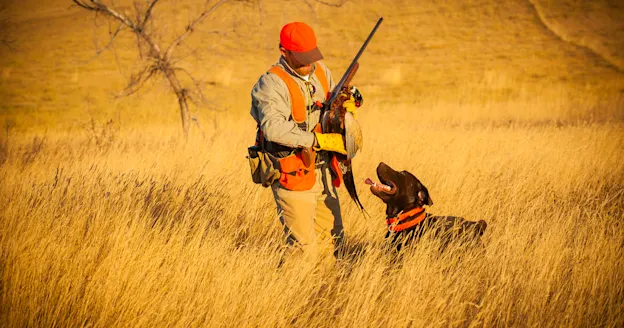TINA WAS in perfect health. Well, almost perfect. At age 11, my orange-and-white English setter had the beginnings of cataracts, visible as milky-blue reflections, in both eyes. I’d also noticed that she sometimes bumped into things—the doorway to her kennel, for example—in low light. My veterinarian, a setter man himself, assured me that this was not uncommon in dogs her age, and that while the condition wasn’t reversible without expensive surgery, it hadn’t progressed to the point that it would affect her in the field.
I loaded Tina into the truck, pointed it west, and hit the road for the Badlands of North Dakota.
Part 1: September
THE BADLANDS, a landscape of buttes, cliffs, canyons, spires, domes, ravines, towers, crevasses, stratified rock outcroppings, broad alluvial plains, smoldering veins of coal, and other tortured geological formations jumbled in preposterously wild confusion, are home to a robust population of sharptail grouse. This was where Theodore Roosevelt ranched and hunted as a young man; in Hunting Trips of a Ranchman, he wrote: “The sharp-tails fly strongly and steadily, springing into the air when they rise, and then going off in a straight line, alternately sailing and giving a succession of rapid wingbeats. Sometimes they will sail a long distance with set wings before alighting.”
If you’re at all familiar with sharptails, you’re nodding and thinking, Yes.
As puckeringly intimidating as the Badlands appear at first blush, the rolling prairies quilted in and around them are relatively dog- and hunter-friendly. And because most of the area’s million acres or so lie within the boundaries of the Little Missouri National Grassland, it’s yours and mine to hunt.
MY FRIEND Tom Ness and I struck out at first light, wanting to take advantage of the cool of a September morning on what promised to be another in a string of blisteringly hot days. The country was tinder-dry, but we’d found a big piece of surprisingly lush grass studded here and there with thickets of buffaloberry—the essential ingredient of productive sharptail habitat in this part of the world. With Tom and his cockers, Kenny and Willow, on my left, I _whoa_ed Tina, let her stand there for a few seconds, then said, “All right.”
She streaked toward the sunrise. It was as if she’d been shot from a cannon.
The hard lesson we all learn is that when things go south for an older dog, they do it in a terrible hurry. One minute your dog is perking along pretty much as always; the next she’s falling off a cliff.
I lost sight of her while Tom and I climbed a rise, then saw her making a pretty cast from right to left about 50 yards out—a cast that came to a crashing stop when, at the edge of a patch of feathery little bluestems, she whirled and froze. I closed the gap and turned to Tom, calling “Point!” When I turned back, the sharptails, a pair, were up and plumply limned against the brightening sky. I shouldered my 16-gauge Fox, swung on the lead bird, and folded it. A cooler head would have gone for the double, but I was so thrilled just to see one fall that it didn’t occur to me to try.
Tom sent the cockers to assist with the retrieve, but Tina didn’t need any help. She scooped the bird—her bird—out of the amber grass and delivered it to my outstretched hand. Business as usual, for her, but something more than that for me, blessed and cursed, as we humans are, by the foreknowledge of mortality.
EVERY FALL has its hierarchy of urgencies. Driving them all is the brevity of the season: Time, which can seem to drag interminably in months not named September, October, or November, becomes a commodity in desperately short supply. And the sense of it racing by is only magnified when your dog is in the twilight of her career. Despite her age, Tina was hunting as well as ever. She was perhaps not quite as thrillingly fleet afoot, not quite as crackingly high-tailed as she’d been in her prime, but her ability to find birds and get them pointed—the bottom line, for a bird dog—was undiminished.
Still, the hard lesson we all learn is that when things start to go south for an older dog, they do it in a terrible hurry. One minute, a little stiff and gray-muzzled but otherwise happy, your dog is perking along pretty much the same as always; the next she’s falling off a cliff. This explains the worm of dread that wriggles to life in the backs of our minds when our dogs reach 8 or 9. You know you’re getting dangerously close to the finish line, even if you can’t see it yet.
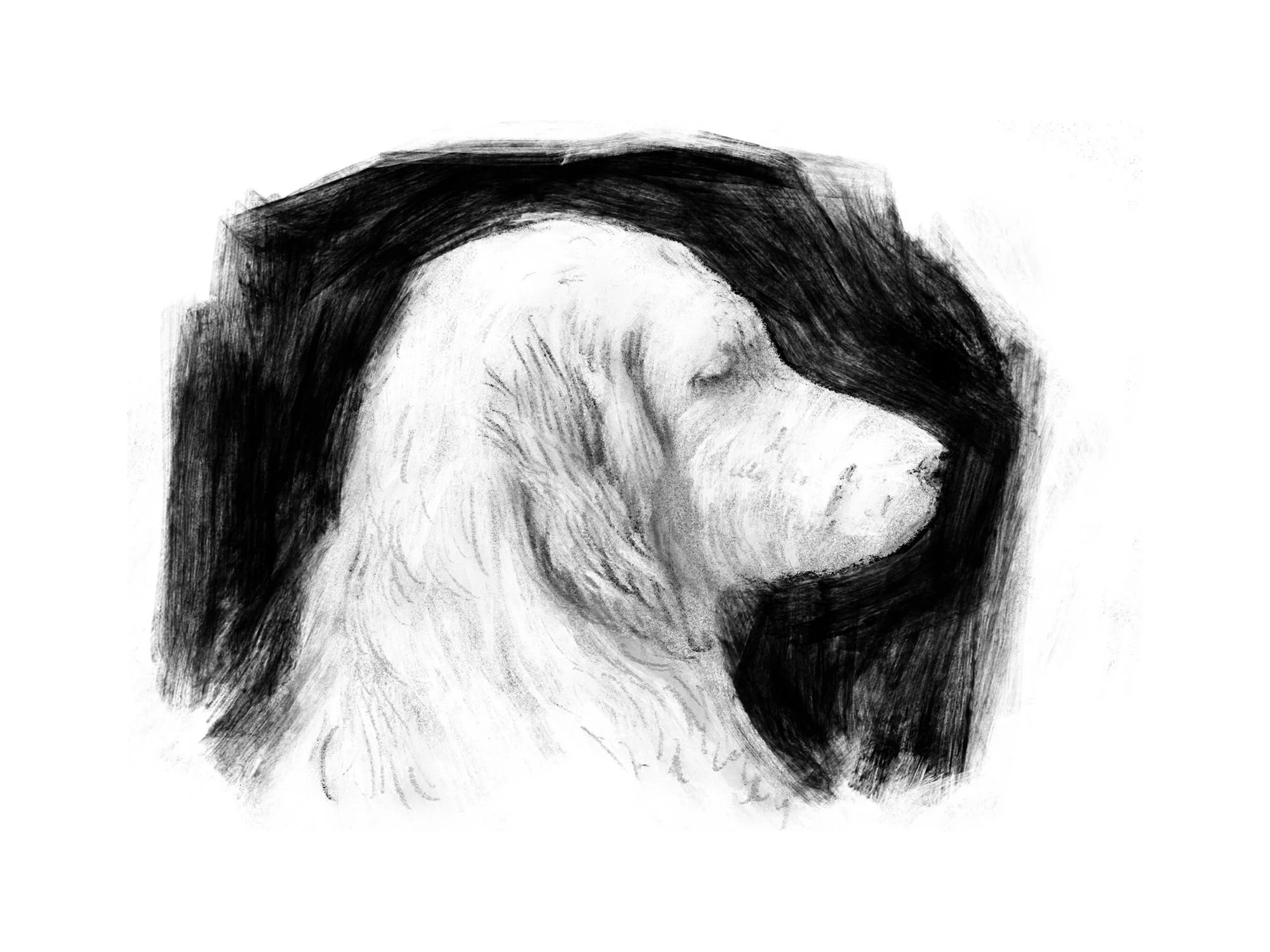
Clay Rodery
THAT SEPTEMBER in the Badlands, Tina continued to put on a show, hunting hard and purposefully, coming in for an occasional squirt of water, then sprinting off again. Tom, who is a professional trainer and field-trial handler and notoriously difficult to impress, marveled at her stamina. “That’s a hell of a dog you’ve got there, Davis,” he said. We were standing on a height, watching Tina flit across a distant hillside. “I can’t believe she’s 11 years old.”
We filled our limits by midmorning. Back at the cabin we’d rented, Tom fired up a cigar, put his feet up, and said, “You know, Davis, that was as good a morning of chicken hunting as I’ve ever had—and that may be the prettiest piece of chicken cover I’ve ever seen.”
That was the good news; the bad news was that after our fast start, the pickings became very slim indeed. Tina, for her part, continued to hunt her fanny off. As frustrating as it was to see her efforts go unrewarded, her grit and heart staggered me. There was a scary moment when she barreled into a barbed-wire fence, but she shook it off and escaped with nothing worse than a bloody divot in the top of her head. Still, it made me wonder, given the state of her eyesight, if it might be a portent of things to come.
On our last morning in the Badlands, Tina dug deep and on a scorching cast to a distant clump of buffaloberry came to a shuddering point. Several birds flushed wild while I closed, but one tarried a second too long. My old dog had given me everything I could have asked for. It was time to turn for home.
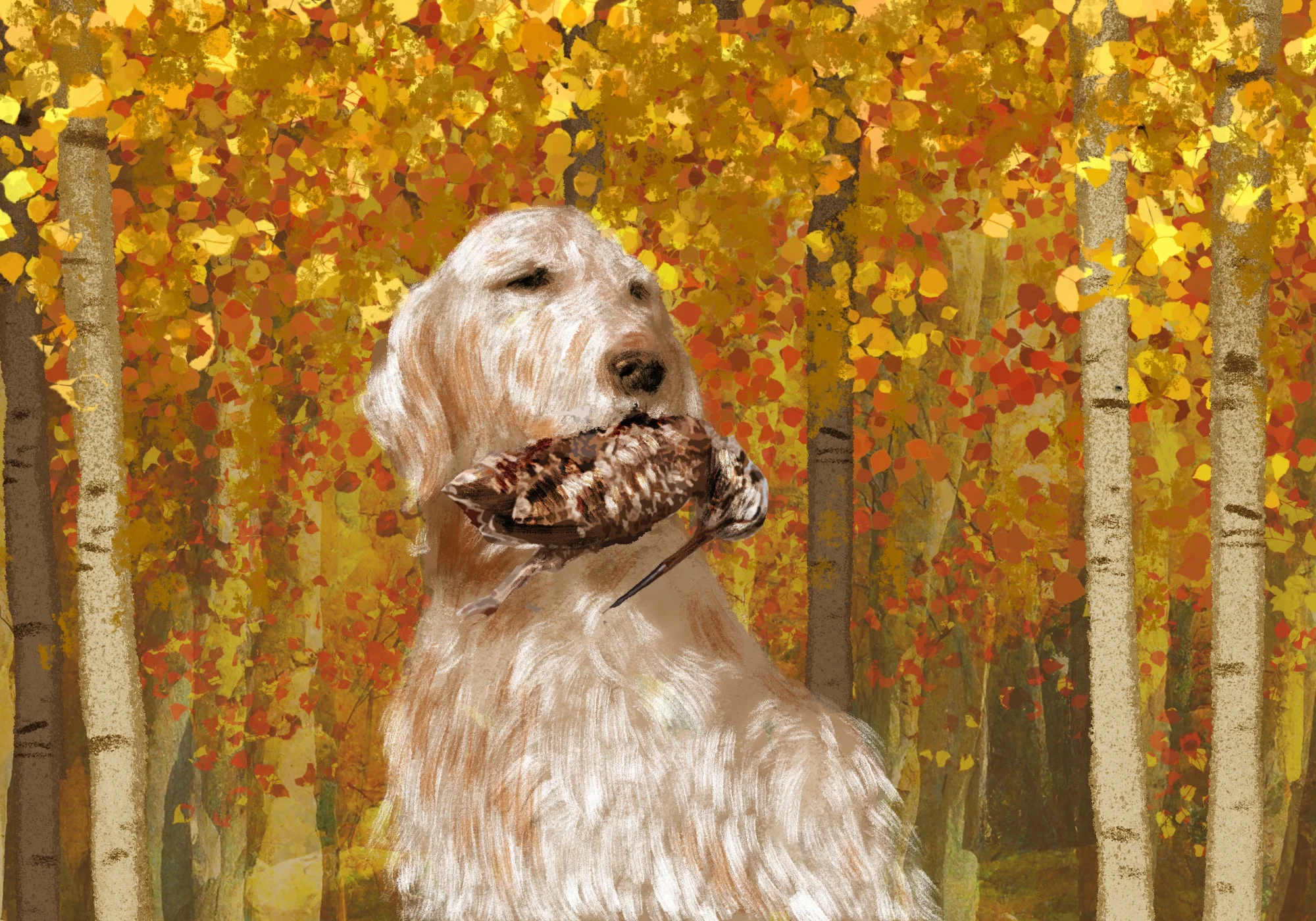
Clay Rodery
Part 2: October
THE ONLY PLACE I want to be in October is a certain cabin tucked off a back road in a lightly populated corner of northeastern Wisconsin. Called Andy’s Acres in honor of its owner, my friend Andy Cook, it’s been my base of operations for grouse and woodcock hunting for more than 30 years. It isn’t fancy, but it has all the necessary amenities. Dogs are welcome inside, as long as they behave themselves.
That wasn’t a problem for Tina, the calmest, most imperturbable dog I’ve ever known. At night she’d curl up on the couch, indifferent to the rabble of other dogs joining her there, then follow me to bed.
The core group of hunters at Andy’s Acres hasn’t changed in all the years I’ve been going. It’s Andy, Erik Forsgren, Don Steffin, Terry Barker, and me. The upshot is a comfort level that I’ve never experienced hunting anywhere else. It feels like coming home.
One crisp morning early in the month, Don, Erik, and I headed for a sidehill cutting that was just coming into its brushy, bristly prime. Don and Erik are flushing-dog guys but were big fans of Tina. It always blew their minds that a dog could run as fast as she did and yet come to a screeching stop before the bird flushed, and that she’d stay that way until you fought your way to where she was, no matter how long it took.
The cutting was still a little green and a lot thick, but we discovered in short order that it was stuffed with woodcock. Our plan was to work the hillside from bottom to top to bottom in a roughly clockwise loop, and within two minutes of my turning Tina loose, her bell went silent. A second later, the Garmin Alpha clipped to my vest buzzed and beeped. I glanced at the screen and called, “Point—48 yards away, a little to our right.”
Unless you’ve been there, you can’t imagine how hard it can be to spot a dog, even a white one, on point in the morass that is early-season grouse and woodcock cover. We were almost on top of Tina before we saw her. The woodcock rose and curled behind a cluster of leafy oak saplings, dodging the volley of 8s that Erik, who had the only look, threw in its direction.
No matter. We’d barely gotten lined out again before Tina pointed another bird, and for the next hour or so, we had the kind of continuously frenetic action that happens maybe a few times in a career. There was no question of me “handling” Tina; she just went from bird to bird to bird and waited for us to find her on point.
Here’s how crazy it was: When I tried to get Tina to hunt dead after we’d knocked a bird down, as often as not she’d point another live bird before she could find the dead one. It had us twisting in all directions. But as problems go, it wasn’t the worst one to have.
The really amazing thing, given the general chaos, is that we recovered all the woodcock we believed we’d hit. Erik and I each had a bird we’d lost sight of the instant we pulled the trigger but were convinced we were “on.” In both cases, our initial search came up empty, but then Tina, on later passes through the area, found and retrieved both birds. And by “later” I don’t mean a couple of minutes; I mean 15 or 20.
The first time she came trotting up to me with a recovered woodcock in her mouth, it took me a few seconds to figure out it was one of the birds we’d given up as lost. The second time, I just shook my head in awe—as I’d done so many times, in so many places, over the course of her career.
She pointed a grouse in that clamor too. It flashed across a keyhole-size opening, and I somehow caught up to it. It would have been a hell of a hunt by any standard, but that put a cherry on top.
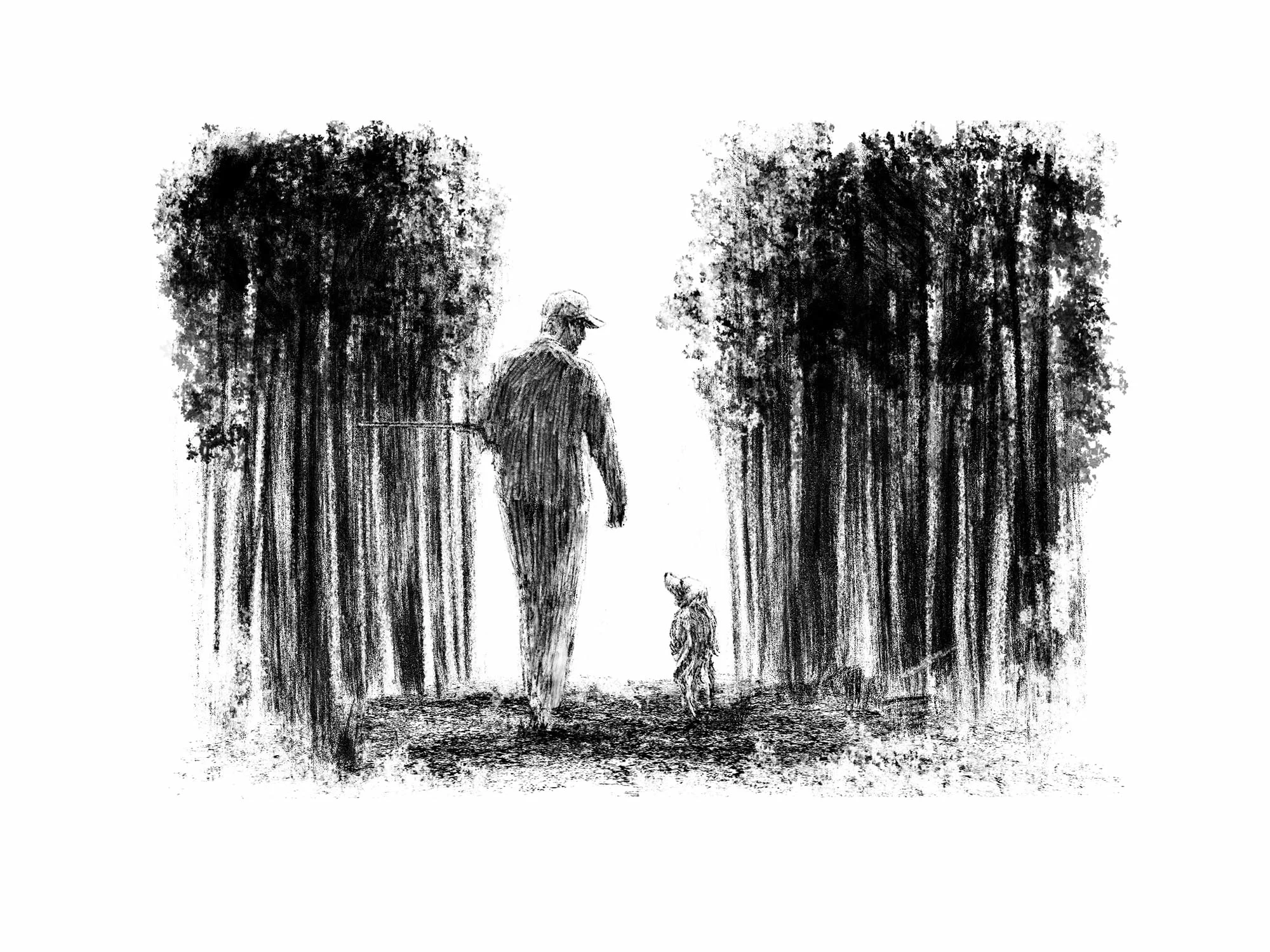
Clay Rodery
AS THE MONTH progressed, the aspens turning gold and the mornings going silver with frost, Tina continued to perform at her customary high level. Every so often I’d see her carom off a stump that she obviously hadn’t seen, but the issue of more pressing concern was that she was losing the directional component of her hearing. There were times when she would stop out of sight and wait for me to call her. When I did, she’d race off in the opposite direction, as if she was responding not to my call but to its echo.
For a methodical, close-working dog, this wouldn’t have been a problem, but the words methodical and close-working were never uttered in the same breath with Tina’s name. She was the type of dog that a Texas quail hunter of my acquaintance once described as “having a low tolerance for country that doesn’t hold birds.” After enduring several prolonged absences in bigger covers where there were no birds to stop her, I made the decision to restrict her to smaller, well-defined “honey holes,” where it was almost impossible to imagine her not finding birds.
The woodcock never had a chance. I just turned Tina loose and let her do what she was born and bred to do.
On our last morning of hunting at Andy’s Acres, I followed the valley of the Peshtigo River south through the Chequamegon-Nicolet National Forest and then east to a woodcock cover we call the Fez. The sky was a canvas of featureless gray, and with the aspens gone mostly gray as well, the landscape had a stark, stripped-down feel and a lonely immensity to it.
Of all the covers she hunted in the area, the Fez was the one that Tina truly made her own. She knew it well, having hunted it multiple times every season since she was an eager, bright-eyed puppy. It was as if she had a topographical map of the place burned into her brain. If there was a bird to be found there, she’d find it.
The woodcock that morning never had a chance. The scenting conditions were perfect, the shooting conditions ideal. Three points, three shots, three birds in the bag. I didn’t bother trying to handle her; I just turned her loose and let her do what she was born and bred to do.
As I walked back to the truck with Tina at heel, a few flakes of snow began spiraling down. I’d finished the season on a high note, and yet my mood was as somber as the sky. Something more than October had ended: Tina’s career as a grouse and woodcock dog had ended too. Her hearing loss had already made hunting her in the woods a dicey proposition; a year from now it would be out of the question. I’d been there before with Emmylou—another setter, and the only other dog I’ve owned who was in Tina’s class—and it wasn’t pretty. Tina deserved better.
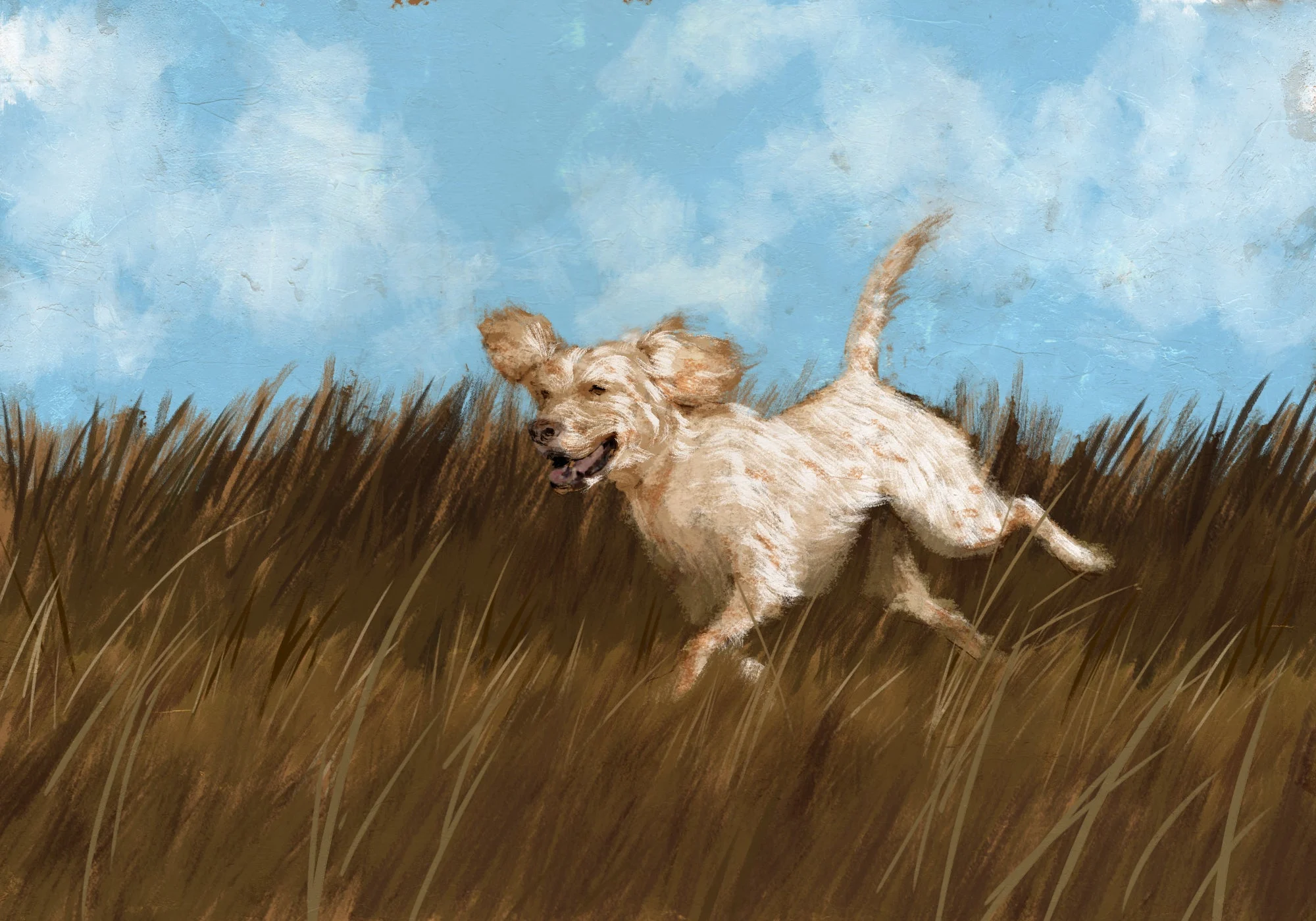
Clay Rodery
Part 3: November
ON THE WIDE-OPEN prairies of South Dakota, Tina’s compromised hearing wouldn’t be a factor. And even with her foggy vision, she’d be able to see well enough to pick me out against a backdrop composed of grass and sky.
That was my working theory, anyway, and while it was heavily laced with wishful thinking, it proved surprisingly accurate. On a November hunt on private land in the central part of the state—a spectacular piece of native prairie that I fancy looked little different from when the buffalo roamed there—it was as if the clock had been turned back and the years melted away. Tina was never better.
One sunny, crackling-cold morning, on a sort of annex to the main property that was managed for pheasants, she came racing toward me down a swale of waist-high grass, popped out onto a mowed strip, and struck point so suddenly, spinning 90 degrees midstride, that I involuntarily cried, “Oh!”
Eleven-year-old dogs aren’t supposed to do that. But Tina did.
Rooster pheasants being rooster pheasants, this one took off running. But Tina could play that game too, and after a tense relocation that took us a distance of some 150 yards, she brought the chase to an end with a point so resolute and emphatic, it left no doubt.
I made the shot, but what I’ll always remember from that hunt is Tina running those tawny billowing prairies. There was an afternoon when, my mind having wandered briefly, I looked up to see her casting left to right across the face of a hillside in the middle distance. She seemed almost detached from the earth, as if she were floating. Her tail was swishing like a cane cutter; her head was high as she sifted the air for any clues it might contain. She was doing what she loved to do, and her joy was not merely palpable. It was incandescent.
I thought she was the most beautiful thing I’d ever seen.
A little while later, on a broad flat ringed by low hills, I saw Tina’s body language change almost imperceptibly. There was the slightest downshift in her stride; her tail gained a few degrees of elevation and moved to a subtly faster rhythm. I’d been sauntering along with the Fox cradled against my midsection, but now I snapped to attention and brought it to port arms.
She’d detected a tendril of scent, and it was only a matter of time, I knew, before she’d lock on and reel it in. She didn’t come to a point so much as she danced into it. The small bunch of prairie chickens flushed a little sooner than I’d hoped, but one bird gave me a crossing chance, 30 yards out, that I made good on.
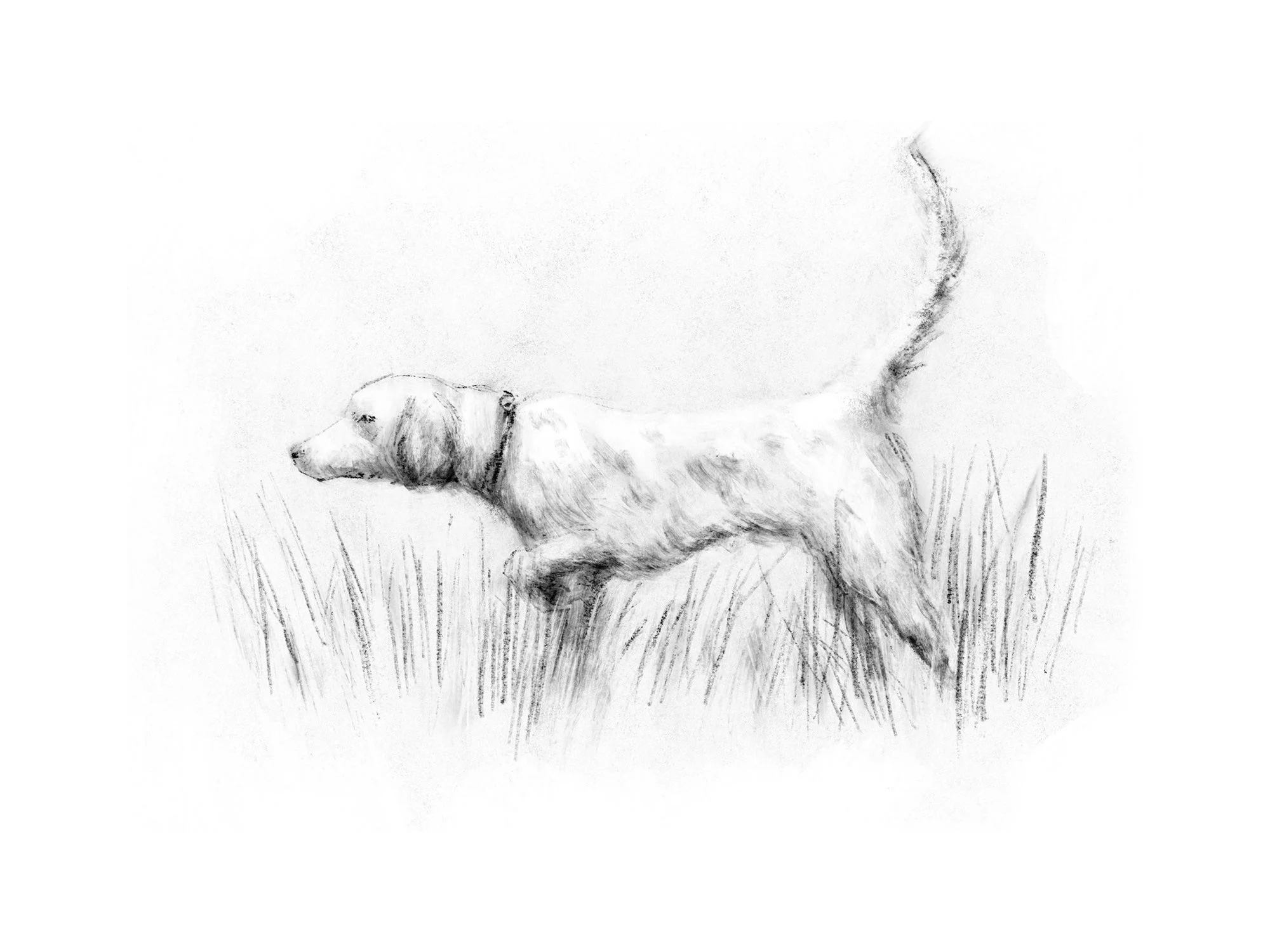
Clay Rodery
IT WAS the last bird I ever shot over Tina. I couldn’t know it at the time, of course. But if the script had been mine to write, that’s how I would have ended it—with a prairie chicken, that grail-like bird that fires my imagination more than any other, over a graceful point.
I’ve owned bird dogs of one stripe or another for more than 40 years, but I’ve never had one that I felt such complete confidence in, whenever and wherever I turned her loose, as I did in Tina. From the rimrock of Idaho to the high plains of Montana to the deep woods of Minnesota, she took the measure of the country, went unfailingly to the birdy places, and pointed what she found there with blazing conviction. Valley quail, Huns, sage grouse, blue grouse, bobwhites, the list went on. It didn’t matter to Tina; she pointed them all. There’s no better, more satisfying feeling, if you’re the kind of bird hunter who’s emotionally invested in the performance of his dogs, than knowing you have a dog like that. But when you know you’re about to lose a dog like that, it leaves a hole in your soul.
As I feared, it wasn’t long after that November hunt that Tina’s vision and hearing fell off the cliff. I’d hoped I might squeeze one more season on the prairies from her, but it wasn’t in the cards. She adapted to her limitations with the stoic grace so utterly characteristic of her. She accepted Rumor, the newly arrived English cocker spaniel, too, although it was with a distinct lack of enthusiasm. She lived a couple months past her 13th birthday, and even when her body had gone lumpy with tumors, her pride was undimmed.
I like to think that, behind those sightless eyes, Tina was sustained by her memories: a trove of highlight-reel clips that she could choose from, and replay, whenever she felt the need. I like to think that I gave her that much, at least, along with the knowledge that she was loved.
This story originally ran in the Fall 2022 Issue of Field & Stream



